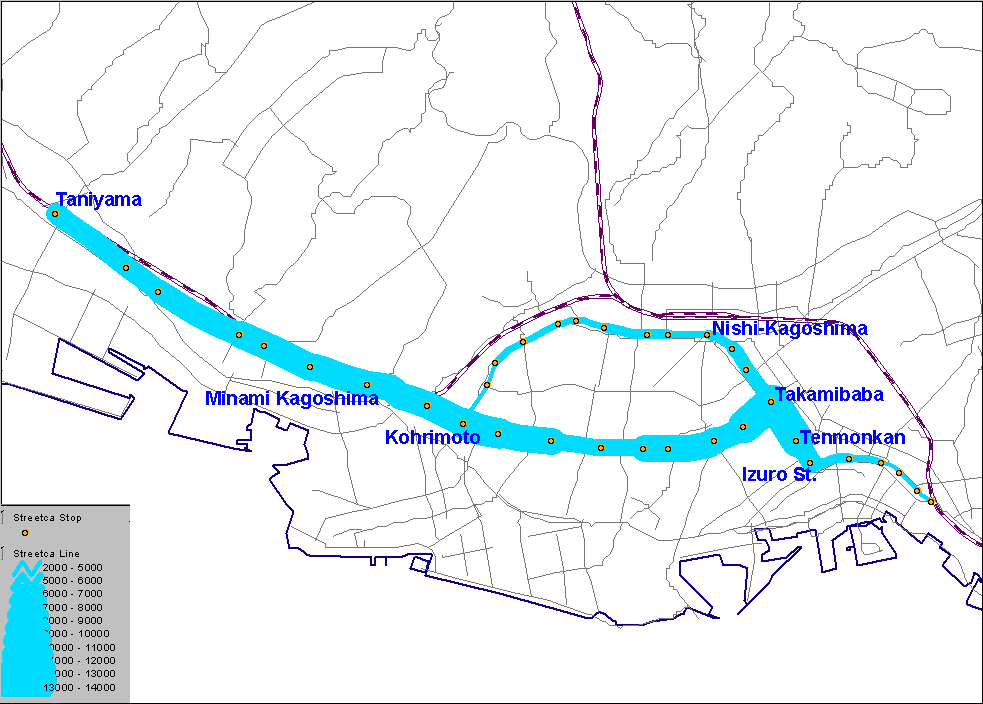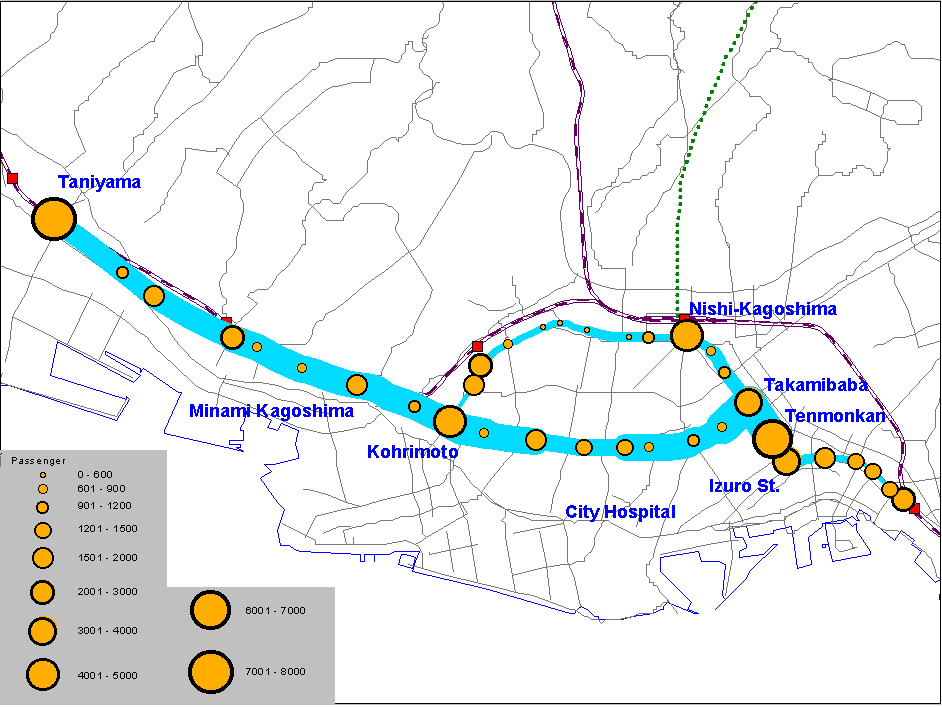| More
and more cars are running in many cities.
Although the car is a very convenient vehicle, it causes serious problems inside city: traffic jams, car accidents, air and noise pollution, and so on. The streetcar can be one of the solutions for these problems. It does not give off gas in the city, it does not cause congestion, it can be friendly to the elderly, to children, and to disabled people. In this project, I analyze the existing
streetcar
line in my hometown of Kagoshima,
Japan, as an alternative for cars,
The map to the right is a map I digitized from a paper map of Kagoshima (2002 source). It covers about 30km from left side to right side. Orientation is north to the right and tipped very slightly toward the top edge. In this paper, based on a larger project, the role of an animated map is emphasized. |
 |

